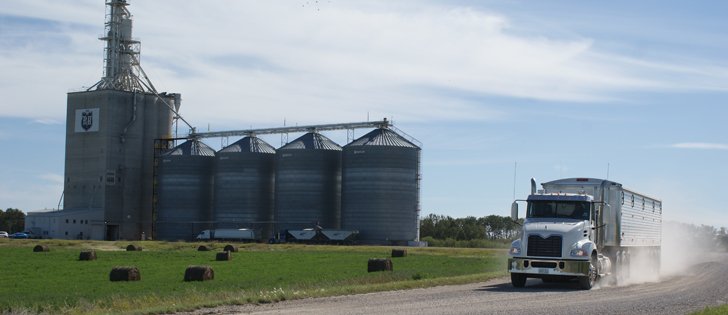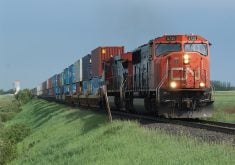Western Canadian farmers have been delivering grain at a brisk pace over the past few weeks.
And so far, grain companies and railway operators have been handling those deliveries without any hiccups, according to the company that monitors the performance of the grain handling system.
“What we’re seeing are some really good volumes going through the system,” said Mark Hemmes, president of Quorum Corp.
“There’s been lots of grain moving through the country elevator system, some good unload counts (at port) … and they’re turning vessels around in Vancouver in around 12 days, which — all things considered — is really good.
Read Also

Farming Smarter receives financial boost from Alberta government for potato research
Farming Smarter near Lethbridge got a boost to its research equipment, thanks to the Alberta government’s increase in funding for research associations.
“We just hope that the other shoe doesn’t drop any time soon.”
Despite what some observers considered a slow start to the 2017-18 delivery season, grain volumes and velocities through the country elevator system have picked up over the past month or so.
Deliveries through the prairie elevator system exceeded a million tonnes a week for most of September.
Average weekly deliveries were in the neighbourhood of 1.2 million tonnes.
Through the first eight weeks of the 2017-18 crop year, total shipments of western Canadian grain from export terminals in Vancouver, Prince Rupert and Thunder Bay were listed at 4.6 million tonnes, down five percent from 2016-17 and nine percent off the five-year average.
Relative to last year’s pace, year-to-date exports through Week 8 were down 20 percent at Thunder Bay and down five percent at Prince Rupert.
Vancouver’s exports were one percent ahead of last year’s pace and two percent ahead of the five-year average.
Deliveries through the country elevator system during September and October are largely dependent on the weather.
Grain movements often slow down during periods of favourable harvest weather, Hemmes said.
With harvest nearing completion in many parts of Western Canada, growers will have more time to turn their attention to marketing and hauling grain, he added.
Hemmes said hopper car supplies at elevator locations on Canadian National Railway and Canadian Pacific Railway networks have been reasonably good.
So far in the 2017-18 crop year, CP has been supplying on time roughly 91 percent of the hopper cars ordered for bulk grain shipments to Vancouver, according to data from the Ag Transport Coalition.
CN’s on-time car order fulfillment for bulk Vancouver grain was listed at 83 percent.
Stocks of grain in the country elevator system and at port terminals have been relatively high during the past few weeks, and unused capacity is limited.
Stocks in store at country elevators were in the range of 3.8 to four million tonnes during the latter half of September, occupying 81 to 83 percent of available working capacity.
Those numbers are high, Hemmes said, but they don’t necessarily point to supply chain problems.
“What we look at more than available working capacity is the gap between volumes in the country elevator system and at port,” Hemmes said.
If stocks at both ends of the system are moving predictably and following a similar pattern, that suggests the system is working well.
Hemmes said vessel lineups at Vancouver are in a normal range.
“So far, everything looks good, knock on wood.”


















